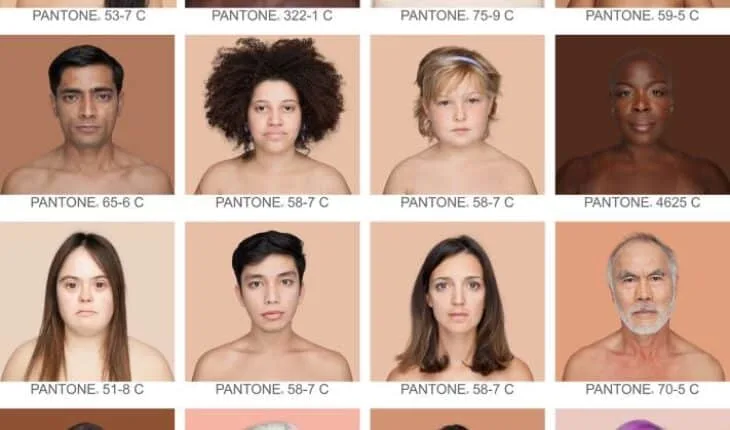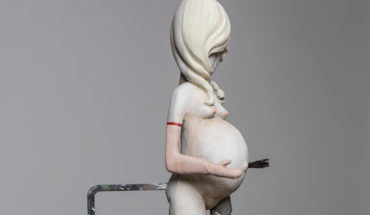Mirror Mirror on the Wall: Rebecca Wallersteiner takes a look at a new exhibition The Cult of Beauty, at Wellcome Collection, London, until 28th April ‘24, which shatters the myth of universal beauty and invites visitors to “to question established norms and challenge preconceived notions of beauty and encourage dialogue, reflection and more inclusive definitions of beauty”
How many times have you looked into a mirror today? Are you constantly scrutinising parts of your face and body that you are not happy with? Until the modern mirror was invented people would have a fairly sketchy idea of what they actually looked like, but that all changed in 1835, after a German scientist Justus von Liebig invented the modern mirror. Now with social media many people have become obsessed with their appearance and presenting an idealised self. Opening at the Wellcome Collection, Euston, on 26th October, The Cult of Beauty a major new exhibition curated by Janice Li “invites visitors to question established norms, challenge preconceived notions of beauty and encourage dialogue, reflection and more inclusive definitions of beauty.” Highlights of the show include over 200 objects and artworks including an ancient Egyptian mirror, a powder compact designed by Salvador Dali, eighteenth century corsets, William Hogarth’s etchings, photographs of hair traditions in Nigeria and a morphing human body created from a dataset of other human bodies.
The exhibition explores three main themes; ideals of beauty, the beauty industry and subverting beauty and encourages more inclusive definitions of beauty. Some of the new artworks on display were specially commissioned for the exhibition. They include an installation created by Xcessive Aesthetics exploring the opportunities nightclub bathrooms can offer as platforms for experimentation and community-building. A film and new sculptural work by Narcissister considers the crushing weight of beauty ideals within mixed-race mother-daughter relationships. A film installation Permissible Beauty (2022), developed by singer-songwriter and art historian David McAlmont, photographer, Robert Taylor and filmmaker Mark Thomas explores why some forms of beauty are more permissible, and more highly valued than others, through new portraits of six Black Queer Britons, offering up a new chapter of British beauty.
In every culture and era, a different ideal of beauty emerges, which people strive to attain and sustain. This exhibition examines the driving forces that have led us to believe in the myth of universal beauty despite its every changing nature. “Much of the show’s narratives centre on our relationship with ourselves,” reflects Li. For thousands of years women have been objectified, scrutinised and judged for what they look like. The ideal of beauty in Ancient Egypt was considered a tall, slender woman with a small chest and wide shoulders. The Victorians and Edwardians favoured narrow waists, while 1920s flappers preferred a more boyish figure and abandoned the previous generations’ uncomfortable heavily boned corsets. In contrast in the 1950s, after the war years, curves were prized above all and ads of the time advised thin women to take weight gain supplements to become less skinny.
Other gems in the exhibition include a nineteenth century textile depicting Jambūdvīpa, the central continent of the middle world in Jain cosmology; illustrations from John Ernest Weavers’ ‘The Ecological Relations of Roots’ and an Egyptian papyrus from 400AD thought to be the earliest fragment in existence of an illustrated herbal for medical purposes.
The exhibition invites us to disapprove of the pursuit of beauty, but clearly there is nothing new about this. However, until mirrors were invented few people had a clear sense of what they looked like. They could look into puddles, or pools, as the Greek god Narcissus mythically did, to see their reflection, which made it difficult if you wanted to check what you looked like before going courting. The earliest man-made mirrors were polished disks of metal or stone, or volcanic glass such as one found in Turkey, dating from circa 6,200 BC, while the Ancient Egyptians tried to glimpse themselves reflected on sheets of bronze and the Mayans used shiny pieces of copper. The Han Dynasty Chinese coveted bronze mirrors, but only the elite could have afforded such expensive objected which were made by highly skilled artisans. These ancient mirrors required rigorous polishing to achieve any kind of decent reflection. High ranking Ancient
Egyptians, Chinese, Peruvians or Aztecs were all buried with highly polished discs whose shine and round shape paid homage to the sun. When these people looked into a mirror it wasn’t usually to see how they looked but rather to communicate with their deities and the supernatural world.
This all changed after the German chemist Justus von Liebig invented the silvered-glass mirror in 1835. His process involved putting a thin layer of metallic silver onto glass using silver nitrate. Although very useful to check while brushing your teeth, or putting on an outfit, the mirror’s relationship with reflection has also made it a tool for vanity, obsession and delusion.
The exhibition will also approach The Industry of Beauty as a key theme to investigate the relationship between medicine and cosmetics, while tracing a history of product innovation, revealing how the industry has influenced our relationship with our bodies and self-image. British photographer Juno Calypso will present works featuring pastel pink and blue interiors, chintzy curtains and 1970s finger food, while her alter ego, Joyce, inflicts rigorous (and lonely) beauty regimes on herself. Shown alongside a new installation by Makeupbrutalism, a conceptual art project made by the London-based visual artist and content creator Eszter Magyar, these works question how beauty has been instrumentalised as monetary and cultural currencies.
The concept of beauty as currency is further explored through beauty pageants and cosmetic surgery. Sarabande resident Artist Shirin Fathi will present ‘The Disobedient Nose’ (2022), an interdisciplinary project of photography, sculpture and installation based on collections at Wellcome, which examines gender representation in relation to the contemporary culture and beauty ideals imposed on Iranian women through cosmetic surgery.
Throughout history, the ideal body shape has been constantly and abruptly changing, with new trends around each corner. The Cult of Beauty shatters the myth of universal beauty and encourages us to take a more compassionate and imaginative look at ourselves and treat ourselves well even if we don’t fit into current rather bland definitions of beauty as presented by social media, television or magazines. Don’t miss seeing it.
The Cult of Beauty, (26th October ‘23 to 28th April ‘24), at Wellcome Collection, 183 Euston Road, Euston, London NW1 2BE; tel. 0207 611 2222
Free admission:
Gallery opening hours: Tuesday, Wednesday, Friday, Saturday, Sunday – 10am to 6pm Thursday 10am to 8pm, closed Mondays
- Dream Worlds a new exhibition in Cambridge - 14th December 2024
- “All Our Stories” a major new exhibition - 26th September 2024
- Dance yourself well - 23rd June 2024






